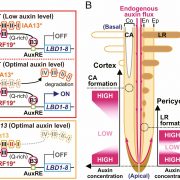
Fine control of aerenchyma and lateral root development through Aux/IAA- and ARF-dependent auxin signaling ($) (PNAS)
Plant Science Research WeeklyAuxin plays a major role in plant development and can alter the developmental program following the stress response. In this paper, Yamauchi et al., have identified the auxin signaling cascade involved in the development of aerenchyma and regulators of this auxin signaling might also be involved in lateral…
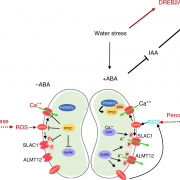
Auxin-sensitive AUX/IAA proteins mediate drought tolerance in Arabidopsis by regulating glucosinolates levels ($) (Nature Communication)
Plant Science Research WeeklyGlucosinolates are secondary metabolites synthesized by plants as a defense compound against pathogen and herbivore. In this paper Salehin et al., have demonstrated regulation of aliphatic glucosinolate levels by auxin signaling that promotes drought tolerance in Arabidopsis. The Aux/IAA proteins are…
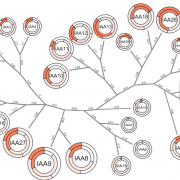
Flexibility of intrinsically disordered degrons in AUX/IAA proteins reinforces auxin receptor assemblies ($) (BioRxiv)
Plant Science Research WeeklyAuxin is involved in multiple plant development and stress response which necessitates complexity in auxin signaling. Auxin at a particular threshold in the cells brings together the TIR1/AFB1-5 (TRANSPORT INHIBITOR RESPONSE1/ AUXIN SIGNALING F-BOX 1-5) members and members of the 29 Aux/IAA members bound…

Minimal auxin sensing levels in vegetative moss stem cells revealed by a ratiometric reporter ($) (New Phytologist)
Plant Science Research WeeklyAuxin plays multiple developmental roles from embryogenesis to seed development. To understand the mechanism of auxin response in plants, researchers utilize the early-diverging land plant models, Physcomitrella patens and Marchantia polymorpha. In this paper, Thelander et al., have identified a…
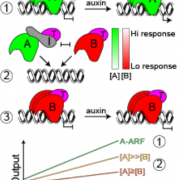
Design principles of a minimal auxin response system ($) (BioRxiv)
Plant Science Research WeeklyAuxin signaling components are evolutionarily conserved across the land plants and the duplication events in these regulators enabled complexity in development. Auxin regulated developmental programming occurs through the ARF (AUXIN RESPONSE FACTORS) transcriptional factors. Marchantia polymorpha serves…
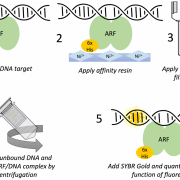
Plant Science Research Weekly: October 18
Blog, WWR Full PostGuest Editor :
Suresh Damodaran
I am a postdoctoral research associate in Dr. Lucia Strader’s lab at WUSTL. My primary area of interest is understanding the role of plant hormones in development. I completed my graduate degree in Dr. Sen Subramanian’s lab at SDSTATE. Twitter: @SureshDamod
Design…
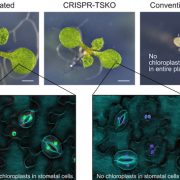
Tissue-specific Gene Elimination in Plants
Research, The Plant Cell, The Plant Cell: In a NutshellDecaestecker and Buono et al. develop a system for tissue-specific gene knockout to enable phenotypic analysis of context-specific gene function.
Plant Cell https://doi.org/10.1105/tpc.19.00454
By Ward Decaestecker, Rafael Andrade Buono, Moritz Nowack and Thomas Jacobs
Background: As plant molecular…
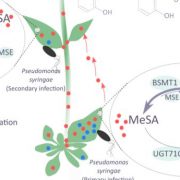
Keep sugar away to stay active: glycosylation of methyl salicylate shuts down systemic signaling
Plant Physiology, Plant Physiology: News and Views, ResearchPlant hormones are frequently modified by glycosylation, hydroxylation, methylation and other conjugations, and these modifications can alter the hormone’s activity and stability (Wang et al., 2019). The phytohormone salicylic acid orchestrates effective defense and mediates local and systemic-acquired…
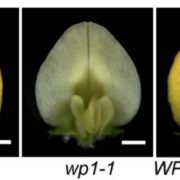
Mellowed Yellow: WHITE PETAL1 Regulates Carotenoid Accumulation in Medicago Petals
Research, The Plant Cell, The Plant Cell: In BriefCarotenoids are tetraterpenoid (C40) lipophilic compounds that are widely distributed in nature and play key roles in pigmentation, photosynthesis, and development (Nisar et al., 2015). Detailed biochemical and genetic analyses have uncovered the carotenoid biosynthetic pathway, which generates a diverse…

